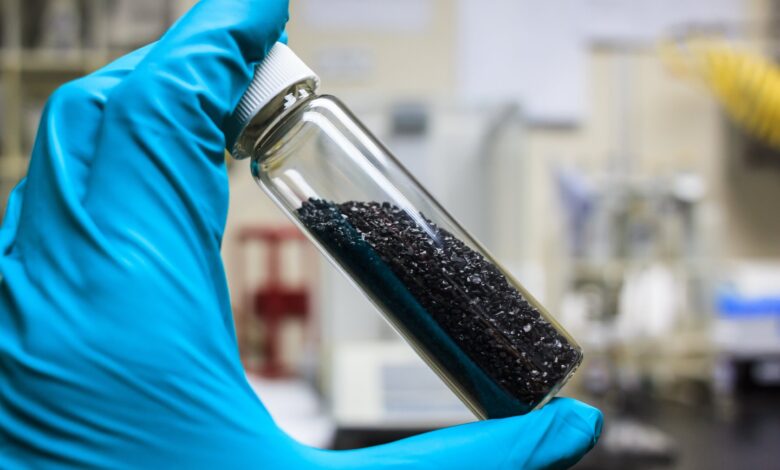Unlocking Clean Air: The Essential Role of Activated Carbon

The quest for a cleaner breathing environment within both industrial and domestic settings has guided us towards revolutionary advancements in air purification technologies. At the centre of this evolution lies an unassuming hero: activated carbon. This substance plays a pivotal role in filtering and purifying the air we breathe, and its importance cannot be overstated.
Understanding Activated Carbon
Activated carbon, also known as activated charcoal, is a form of carbon processed to have small, low-volume pores that increase the surface area available for adsorption or chemical reactions. This alteration of its structure makes it highly effective at capturing, removing and neutralising contaminants in air and water.
The Science Behind Its Effectiveness
The efficacy of activated carbon hinges on the concept of adsorption, wherein pollutant molecules adhere to the surface of the carbon. The vast surface area provided by activated carbon, which can be as much as 3000 square metres per gram, provides numerous bonding sites for unwanted molecules. When air passes over or through this medium, contaminants such as volatile organic compounds (VOCs), odours, and chemicals are trapped, resulting in significantly purified air.
Uses of Activated Carbon in Air Purification
Activated carbon is predominantly used in air purification systems. It is commonly found in residential air purifiers and is also integrated into large-scale filtration systems in commercial and industrial environments. Its versatility allows it to cater to a range of purification needs, from household applications to controlling emissions in manufacturing processes.
Removing Odours and Gaseous Pollutants
One of the primary applications of activated carbon in air purification is the removal of odours. Whether it’s eradicating the smell of smoke, pets or dampness, activated carbon excels in eliminating organic odours. Furthermore, it is potent against gaseous pollutants released from paints, varnishes, and cleaning products that can compromise indoor air quality.
Industrial Application for Clean Air
In industrial settings, activated carbon is critical for controlling emissions. It’s used to capture solvents released during manufacturing and to purify air in chemical processing plants, thus ensuring regulatory compliance and protecting the environment. Moreover, in the medical sector, it serves to maintain sterile conditions by filtering airborne pathogens and contaminants.
Caring for Your Activated Carbon Filters
For activated carbon filters to maintain their effectiveness, they must be cared for and replaced periodically. Once all of the adsorption sites are occupied, the filter can no longer trap contaminants, and it becomes imperative to introduce a fresh layer of activated carbon to continue the purification process.
When to Replace Your Filter
The life expectancy of an activated carbon filter varies based on the contaminant load and usage patterns. However, most manufacturers recommend replacement every three to six months to ensure optimal performance. Always refer to the manual provided with your air purification system for specific guidance.
The Evolution of Activated Carbon Technology
Research and development in the field of activated carbon are constantly pushing the boundaries of efficiency and effectiveness. Today, available varieties are designed specifically for different industrial and residential applications, targeting particular contaminants with increased precision.
Environmental Sustainability
An additional benefit of activated carbon is its compatibility with environmental sustainability goals. As a natural material, it doesn’t add to chemical pollution, and spent carbon can be reactivated for reuse, further minimising waste. The eco-friendly nature of activated carbon is increasingly appealing amidst a growing global consciousness towards environmental conservation.
Conclusion: The Indispensable Ally for Clean Air
Activated carbon stands as an indispensable ally in our ongoing battle against air pollution. Its broad-spectrum efficiency, affordability, and eco-friendly attributes have solidified its status as a cornerstone in air purification solutions. As we continue to innovate and refine this technology, we can expect to yield even greater results in unlocking clean air for healthier living and a cleaner environment.
Unlocking the Future of Clean Air
In our collective endeavour to secure a future with purer air, activated carbon will undoubtedly remain a critical component. Through continued innovation and the widespread implementation of activated carbon-based solutions, we can work towards a world where clean air is not a luxury, but a fundamental right for all.
Embracing the role of activated carbon in our daily lives and in commercial applications is essential for achieving our clean air goals. We must appreciate and utilise its remarkable capacity to detach us from the grip of airborne impurities, bringing us closer to the vision of a pollution-free environment. As research progresses, this humble material will undoubtedly reveal even more benefits, solidifying its place in the vanguard of air purification.
In a world where air quality is increasingly under scrutiny, activated carbon offers a beacon of hope. It is a powerful tool in the hands of those committed to environmental well-being and public health. By harnessing its full potential, we can unlock the door to clean air and breathe easy, knowing we are safeguarded by the essential role of activated carbon.





